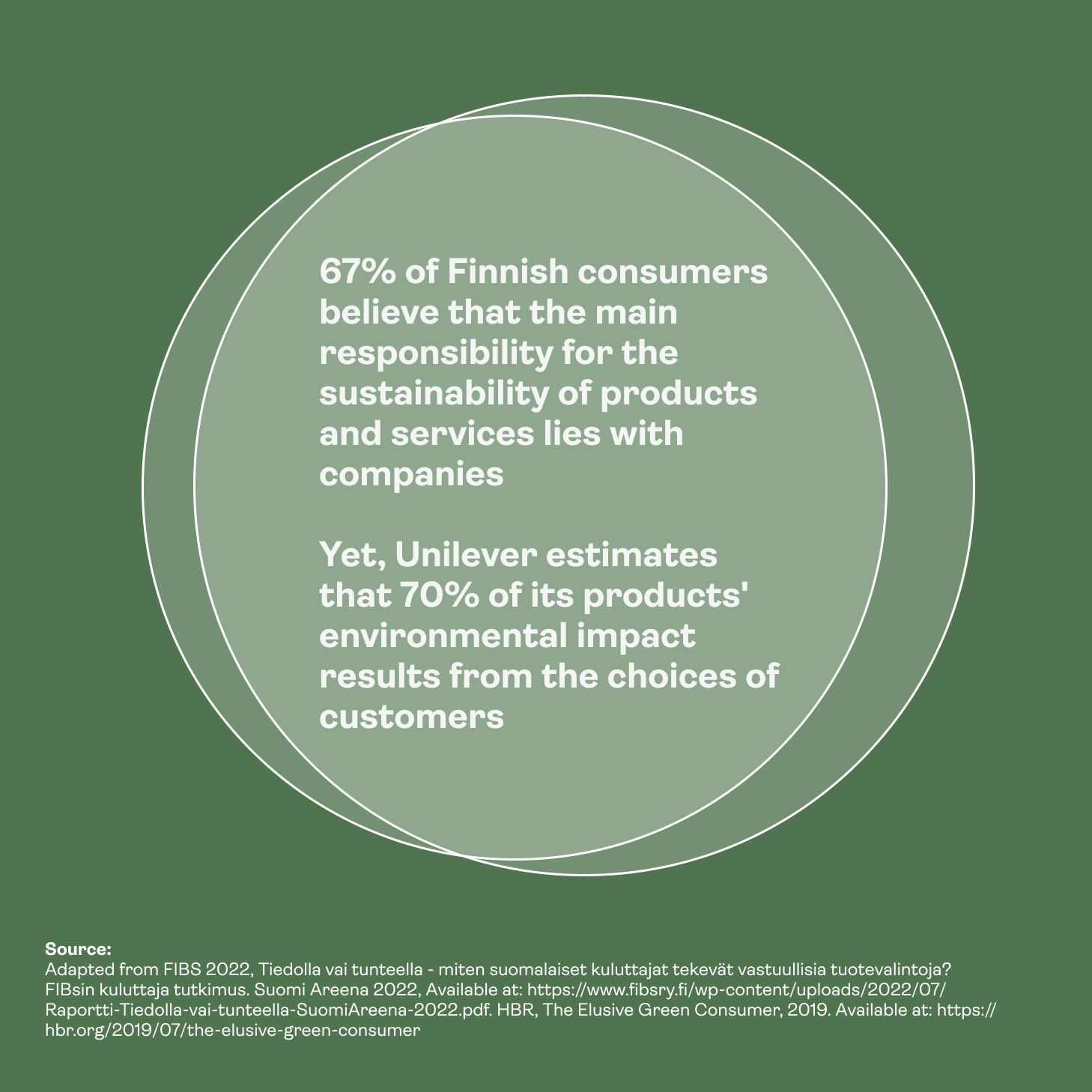20 October 2023
The Human Touch: How Customer Experience Drives Circular Transformation
Juha Johansson
Sustainability expert
20 October 2023
The Human Touch: How Customer Experience Drives Circular Transformation
Juha Johansson
Sustainability expert
In our journey toward a circular economy, one often overlooked but critical factor is the role of customer experience. Circular transformation is not solely about saving the planet through technological innovations; it's about redesigning our lives. It often goes unnoticed that many of our beliefs, structures, and dynamics of life beyond apparent products and services are a result of ancient and modern design choices. While it's overwhelming to think about how much we must change, it also presents an opportunity. If we designed our way into this situation, we might as well design our way out.
This post delves into the human aspect of circularity and how businesses and consumers share the responsibility for driving change - both you and your customers have a vital role to play.
Circular Transformation: Shared Responsibility for Companies and Customers
The responsibility for circularity is a shared one. Companies must design products and services with longevity, repairability, and recyclability in mind. They can also drive change towards circularity by creating awareness through communication. However, it is important to acknowledge that customers also play a vital role in this transformation. They need to choose sustainable products, maintain them, and dispose of them responsibly. Circular change is a partnership between companies and consumers.

Business Opportunities Throughout the Product Lifecycle
Circularity is not confined to the production phase; it extends throughout a product's lifecycle. For businesses, this presents a unique opportunity to interact with customers at various stages, such as maintenance, refurbishing, and resale services.(1)
Products designed for durability and upgradability encourage ongoing customer engagement. In addition to high-cost products, strong brands have an existing after-sale market and more apparent opportunities to monetise, even in low-cost categories.
Even in times of inflation, customers are willing to pay for sustainability. Recent studies, like the one by McKinsey (1), show that products with ESG (Environmental, Social, and Governance) claims have outperformed their counterparts and are more resilient to inflation. Over the past five years, they grew by 28% compared to 20% for products without such claims in the US market.
Sources:
1. McKinsey & Company, 2023. Consumers care about sustainability—and back it up with their wallets. Accessed 20.10.2023 https://www.mckinsey.com/industries/consumer-packaged-goods/our-insights/consumers-care-about-sustainability-and-back-it-up-with-their-wallets
Requirements for Successful Human Change Towards Circularity
To make your circular innovation work for consumers make sure these 5 requirements are true in the case of your service.
Knowledge of Impacts: Understanding the environmental and social impacts of our choices is crucial. Both businesses and consumers need to be aware of the consequences of their actions.
Social Acceptance and/or Pressure: Social norms play a significant role in driving change. As more people embrace circular practices, it becomes more acceptable and expected.
Skills of sustainable consumption: Customers need the skills and guidance for sustainable behavior. Companies need the skills to design products for circularity.
Ease and Supporting Defaults for sustainability: Make circular choices the easy choices. Businesses can support customers in making sustainable decisions by default.
Relevance through local impact and meaning: Give meaning to the theme by leveraging responsibility and pride to contribute to the local society and environment.
In conclusion, the transformation toward a circular economy is, at its core, a human endeavor. It's not just about saving the planet; it's about changing the way we live, consume, and interact with the world around us. The responsibility is shared, and the opportunities are vast, extending far beyond the initial sale. To succeed in this journey, we must focus on human-centric solutions, educate ourselves and others, and make circular choices the norm, not the exception.
While it might feel daunting, it’s most important to start small, learn and grow your capabilities and impact over time.
The best way to predict the future is to make it happen. Together, we can create a sustainable and regenerative future.
Let's talk about how to make this happen
We help you set the foundation and grow into becoming true business leaders in vast sustainability transformations.
Mia Folkesson
Managing Partner
mia@impaktly.com
Let's talk about how to make this happen
We help you set the foundation and grow into becoming true business leaders in vast sustainability transformations.
Mia Folkesson
Managing Partner
mia@impaktly.com